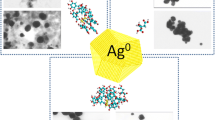Abstract
This article reports the experimental results of a conductometric study on the time evolution, over a 541-day period, of 450 samples of Extremely Diluted Solutions (EDS) of fullerene and carbon nanotube and 450 samples of twice-distilled water, stored in alternate rows of EDS and water spaced 0.5 cm apart. The purpose was to establish whether these two aqueous systems are able to transmit, via electromagnetic fields, their variations in the supramolecular structure of the solvent water which has not undergone any previous perturbation. The chemical-physical method employed was conductometry, which proved to be the simplest and most efficient means for quickly and accurately monitoring the structural variations. In addition, since it has been demonstrated that there is a clear linear correlation between specific conductivity and heat of mixing with alkaline solutions, the conductometric result can also be extended to the calorimetric result. These findings, though doubtless unexpected and intriguing, are highly significant. The alterations over time of the pure water samples follow those of the EDS surprisingly closely.











Similar content being viewed by others
References
Ball P. Water: water-an enduring mystery. Nature. 2008;452(7185):291–2.
Betti L, Trebbi G, Zurla M, Nani D, Peruzzi M, Brizzi M. A review of three simple plant models and corresponding statistical tools for basic research in homeopathy. Sci World J. 2010;23:30–47.
Magnani P, Conforti A, Zanolin E, Marzotto M, Bellavite P. Dose-effect study of Gelsemium sempervirens in high dilutions on anxiety-related responses in mice. Psychopharmacology (Berl). 2010;4:533–45.
Montagnier L, Aïssa J, Ferris S, Montagnier JL, Lavallee C. Electromagnetic signals are produced by aqueous nanostructures derived from bacterial DNA sequences. Interdiscip Sci Comput Life Sci. 2009;1:81–90.
Chirumbolo S, Brizzi M, Ortolani R, Vella A, Bellavite P. Inhibition of CD203c membrane up-regulation in human basophils by high dilutions of histamine: a controlled replication study. Inflamm Res. 2009;58:755–64.
Mäder P, Fliebbach A, Dubois D, Gunst L, Fried P, Niggli U. Soil fertility and biodiversity in organic farming. Science. 2002;296(5573):1694–7.
Elia V, Niccoli M. Thermodynamics of extremely diluted aqueous solutions. Ann NY Acad Sci. 1999;879:241–8.
Elia V, Niccoli M. New physico-chemical properties of extremely diluted aqueous solutions. J Therm Anal Calorim. 2004;75:815–36.
Elia V, Elia L, Cacace P, Napoli E, Niccoli M, Savarese F. Extremely dilute solutions as multi-variable systems. A study of calorimetric and conductometric behaviour as function of the parameter time. J Therm Anal Calorim. 2006;84(2):317–23.
Elia V, Elia L, Napoli E, Niccoli M. Conductometric and calorimetric studies of serially diluted and agitated solutions: the dependence of intensive parameters on volume. Int J Ecodyn. 2007;1(4):361–72.
Elia V, Napoli E, Niccoli M, Marchettini N, Tiezzi E. New physico-chemical properties of extremely dilute solutions. A conductivity study at 25 °C in relation to ageing. J Solut Chem. 2008;37:85–96.
Belon P, Elia V, Elia L, Montanino M, Napoli E, Niccoli M. Conductometric and calorimetric studies of the diluted and agitated solutions. On the combined anomalous effect of time and volume parameters. J Therm Anal Calorim. 2008;93(2):459–69.
Elia V, Elia L, Marchettini N, Napoli E, Niccoli M, Tiezzi E. Physico-chemical properties of aqueous extremely diluted solutions in relation to ageing. J Therm Anal Calorim. 2008;93(3):1003–11.
Cacace CM, Elia L, Elia V, Napoli E, Niccoli M. Conductometric and pHmetric titrations of extremely diluted solutions using HCl solutions as titrant. A molecular model. J Mol Liq. 2009;146:122–6.
Elia V, Napoli E, Niccoli M. A molecular model of interaction between extremely diluted solutions and NaOH solutions used as titrant. Conductometric and pHmetric titrations. J Mol Liq. 2009;149:45–50.
Elia V, Napoli E. Dissipative structures in extremely diluted solutions of homeopathic medicines. A molecular model based on physico-chemical and gravimetric evidences. Int J Des Nat. 2010;5(1):39–48.
Elia V, Napoli E, Niccoli M. Thermodynamic parameters for the binding process of the OH− ion with the dissipative structures. Calorimetric and conductometric titrations. J Therm Anal Calorim. 2010;102(3):1111–8. doi:10.1007/s10973-010-0757-1.
Nicolis G. Physic of far-equilibrium systems and self-organization. In: Davies P, editor. The new physics. New York: Cambridge University Press; 1989.
Prigogine I. Time, structure and fluctuations. Nobel Lecture; 1977.
De Grotthus, CJT. The Grotthus mechanism. Ann Chim LVIII. 1806;58:54–74.
Rey L. Thermoluminescence of ultra-high dilutions of lithium chloride and sodium chloride. Physica A. 2003;323:67–74.
Author information
Authors and Affiliations
Corresponding author
Rights and permissions
About this article
Cite this article
Elia, V., Marrari, L.A. & Napoli, E. Aqueous nanostructures in water induced by electromagnetic fields emitted by EDS. J Therm Anal Calorim 107, 843–851 (2012). https://doi.org/10.1007/s10973-011-1484-y
Received:
Accepted:
Published:
Issue Date:
DOI: https://doi.org/10.1007/s10973-011-1484-y




